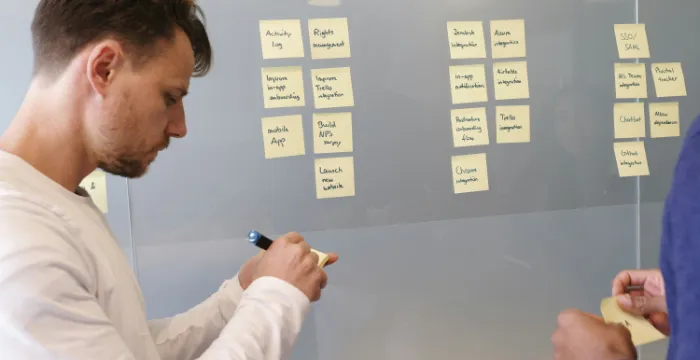Beat the Burnout Cycle: A 5-Step Plan for Sustainable Energy
If you’ve been feeling cynical, detached from your work and unable to achieve your goals, you might be caught in the burnout cycle.
A Burnout is More Than Just Being Tired
In our culture of hustle and "always-on" connectivity, a feeling of persistent exhaustion has become the norm. But there’s a critical difference between being tired and experiencing burnout. Burnout is a state of emotional, physical and mental exhaustion caused by prolonged or excessive stress. It’s not solved by a weekend rest; it’s a systematic depletion of your energy reserves.
If you're having difficulties for achieving your goals at work, feel detached from work or been feeling cynical then this can be the sign of a burnout cycle. The great news is that you can break free. This isn't just about taking a vacation; it's about fundamentally changing how you work and live. This post provides a practical 5-step plan to recognize the signs, prevent the slide and build sustainable energy for long-term productivity and well-being.
Recognizing the Three Stages of a Burnout
The first step to beating burnout is accurately identifying its symptoms. According to the World Health Organization (WHO), burnout is categorized by three dimensions:
1. Exhaustion (The Physical Drain)
This goes beyond typical fatigue. It involves feeling perpetually drained, having trouble sleeping (insomnia), experiencing chronic headaches or having a weakened immune system.
2. Cynicism and Detachment (The Emotional Shift)
You begin to feel detached from your job or responsibilities. You may develop a cynical or negative attitude toward coworkers, friends or tasks you once enjoyed.
3. Reduced Professional Efficacy (The Mental Block)
You feel a decline in competence and achievement. Even small wins seem impossible and you doubt your own ability to get things done effectively.
The 5-Step Plan to Beat Burnout and Regain Energy
This plan moves beyond simple tips to address the systemic causes of burnout and cultivate sustainable productivity.
Step 1: Establish Hard Boundaries (The Great Disconnect)
Burnout often happens because the line between work and life dissolves. You must create and enforce clear, rigid limits to protect your mental space.
- Implement "Digital Sunset": Set a strict time (e.g., 7:00 PM) when you close your laptop and silence work-related notifications. Your evening belongs to you, not your inbox.
- Define Your "No" List: Identify tasks, people or commitments that drain you without adding value. Be ruthless in saying "no" to protect your time and energy.

Step 2: Prioritize Rest Over Productivity (The Energy Audit)
We mistakenly view rest as a reward after peak productivity. Rest is, in fact, the foundation of sustainable high performance.
- Schedule True Rest: Don't just collapse, actively schedule breaks. Take a mindful walk, read a non-work book or engage in a non-productive hobby.
- Optimize Sleep: Treat sleep as a non-negotiable health pillar. Aim for 7-9 hours of quality sleep nightly. Good sleep is the ultimate defense against chronic exhaustion.
Using a sleep tracker device can help you measure your sleep quality and make adjustments to improve your night rest.

Step 3: Recalibrate Your Workload (The 80/20 Rule)
If your workload is the source of the stress, you must change the workload, not just your coping skills. Use the Pareto Principle: 80% of your results come from 20% of your tasks.
- Identify 20% High-Impact Tasks: Focus your energy on the tasks that deliver the most value.
- Delegate or Delete the 80%: Can low-impact tasks be delegated, automated or removed entirely? Freeing up mental space is crucial for beating the burnout cycle.

Step 4: Reconnect with Your "Why" (The Meaning Finder)
Cynicism often arises when you lose touch with the meaning and value of your effort. Re-establish purpose to reignite intrinsic motivation.
- Journal on Impact: Spend 5 minutes journaling about how your work or responsibilities positively affect others or align with your values.
- Seek Mastery: Focus on improving a specific skill related to your work. The feeling of mastery and growth is inherently energizing and acts as a counterpoint to feelings of low efficacy.

Step 5: Nurture Physical and Mental Health (The Non-Negotiables)
Your body and mind are a singular system. Burnout is a failure of this system; its repair requires holistic maintenance.
- Move Your Body: Regular exercise (even a 30-minute walk) releases mood-boosting endorphins and is a powerful antidote to chronic stress.
To help to keep you motivated, track your activity using an activity tracker which measures your step-count, heart-rate and sleep rhythm. - Fuel Wisely: Reduce reliance on caffeine and sugar for energy spikes. Focus on whole foods that provide steady, sustainable energy.
- Practice Mindfulness: Incorporate 5 minutes of daily mindfulness exercises to observe your stress levels without judgment. This builds the awareness needed to stop before you hit the wall.
Final Thoughts to Beat a Burnout
Burnout is a warning sign, not a badge of honor. Achieving long-term success and high performance isn't about working harder; it’s about working smarter and prioritizing sustainable energy. By implementing these 5-step strategies, setting boundaries, prioritizing rest, recalibrating workload, reconnecting with purpose and nurturing your health, you can effectively beat the burnout cycle and build a life of consistent productivity and genuine well-being. Start small, be consistent and choose yourself today. Consider a hobby like cooking quick and easy recipes.




